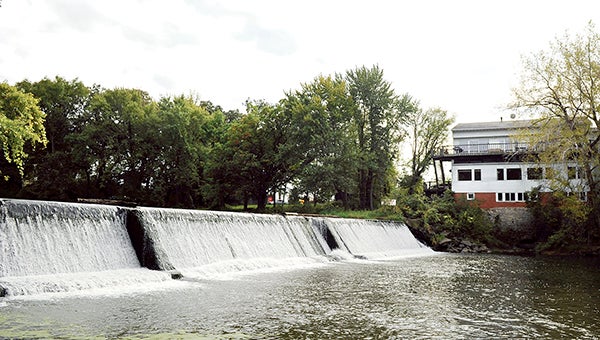Hormel may donate dam to Austin
Published 10:44 am Thursday, February 4, 2016

Water flows over Ramsey Dam early last fall. Hormel Foods Corps., who owns the dam, is considering donating it to the city. — Herald file photo
Hormel Foods Corp. is interested in donating Ramsey Dam to the city of Austin, a move that could come at a good time as the city and Vision 2020 aims to improve recreational opportunities around Ramsey Mill Pond.
Public Works Director Steve Lang told the City Council during Monday’s work session that the city is in the early stages of acquiring the dam, along with $650,000 toward improvements.
“I believe public ownership of the dam is the proper tool to ensure the lasting longevity of the dam and for recreational and flood control purposes is maintained,” Lang said.
The city approved Lang’s request to move forward on the project, and he’ll bring additional information back to the council.
Hormel recently commissioned a study on the dam, which identified necessary repairs such as tree and brush removal, grouting and tuck pointing of stone work, structural improvements and more, though Lang said the dam is in pretty good condition for its age.
The company originally acquired the dam in the 1970s to support and preserve the water to its plant operations including water wells, Lang said. But Hormel now purchases water from Austin Utilities and those wells were decommissioned when the company switched from well water to public water.
Word that Hormel may be interested in donating the dam comes as Vision 2020 and the city are in the early stages of finding ways to enhance recreational opportunities around the dam and Ramsey Mill Pond, and the city is seeking $3 million in state bonding for just that purpose.
The tentative plan includes buying more land, building two miles of trail, restoring a railroad bridge, improving the dam and building public amenities to improve the area.
“From a city standpoint if that property and if Vision 2020 is trying to enhance this with a trail up to that bridge, which then leads to another DNR trail, there likely could be some additional annexation down the road with this property that is being purchased by the county, and could be annexed into the city as well,” Lang said.
If the city acquires the dam, it would open up other possibilities for funding sources around the dam site and also future conversations with the Cedar River Watershed District regarding grant opportunities.
Lang noted Mower County has some interest in participating in some way and could seek Minnesota Department of Natural Resources funding for projects. The city could also seek a Hormel Foundation grant to cover potential acquisitions of nearby properties.
City Administrator Craig Clark said the area around the dam really is an unknown gem in the community.
“People you talk to don’t even recognize there’s a natural area that close, the wildlife management area, scenic natural area, trails there,” Clark said. “It has a lot of potential.”
Ramsey Dam created the 52-acre Ramsey Mill Pond upstream. It is the largest body of water in Mower County.
“This has a potential to increase the recreational opportunities for Austin residents, in addition to recreation the dam serves an important purpose for flood reduction to the city of Austin,” Lang said.
The city could also maintain the dam for flood control measures, which is the current purpose of the dam.
Lang said officials looked into removing the dam when the Cedar River Watershed District was formed, but they actually found the opposite. From a flood control standpoint, Lang said the dam provides a great benefit and if the dam was not in place flood waters would pass through Austin at a higher rate of speed.
“The dam provides 36 percent flow reduction to the city of Austin, so the dam is a great benefit for flood control,” Lang said. “The flow reduction is important to the mitigation efforts that we’ve already completed throughout the community.”
Lang also said the dam protects the $14.5 million North Main flood control project and 275 home acquisitions completed by the city through its flood mitigation efforts.
“I think it’s a good move from a flood control standpoint and then whatever recreation is a benefit above and beyond that,” Lang said.
If the city does take ownership of the dam, it would most likely be annexed into the city, Lang said. The city would also do an additional study of dam improvements and look at other options concerning the Cedar River, such as installing a riffle or riprap, which would help fish migrate to go from the lower part of the dam to the upper part.
Lang said the DNR is looking to remove dams right now and if this dam were to fail, it wouldn’t be good.
“It would likely be very difficult to get a permit from the DNR to replace the dam, but with the dam in place, it’s easier to get a permit to maintain it than it would be to replace it,” Lang said.
This would not the first time a dam has been donated to the city. In 1984, Hormel transferred ownership of the Fourth Avenue Dam to the city after completing a dam safety inspection and corrected any deficiencies that were noted.
The DNR was also involved in that process, but Lang said he wasn’t sure if they would still oversee that process.




